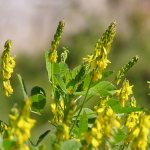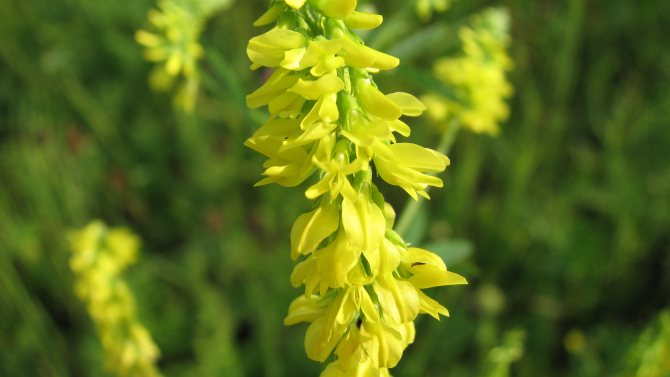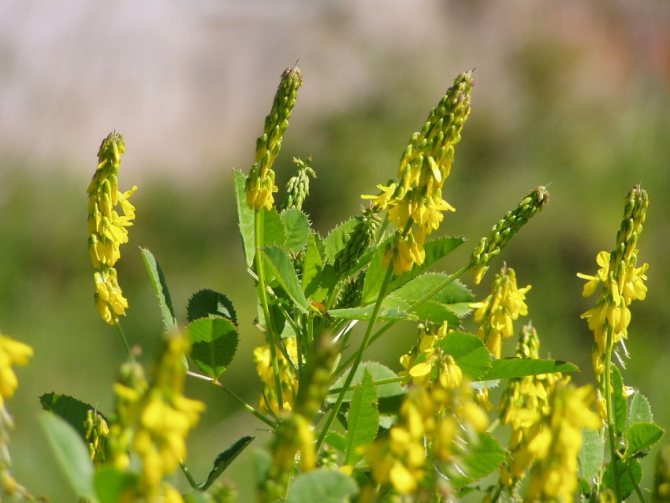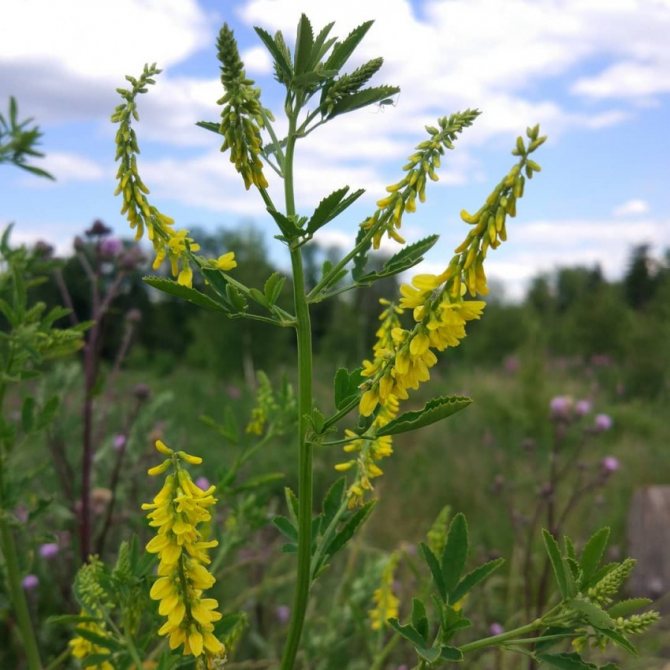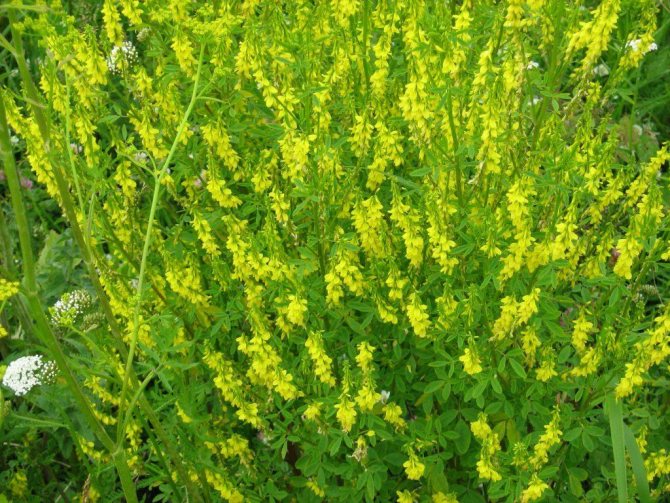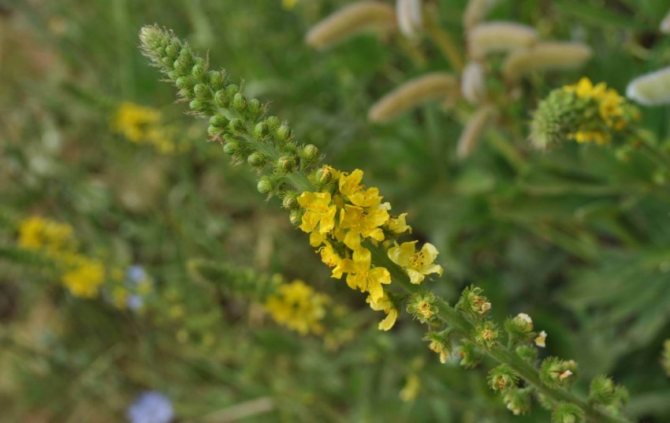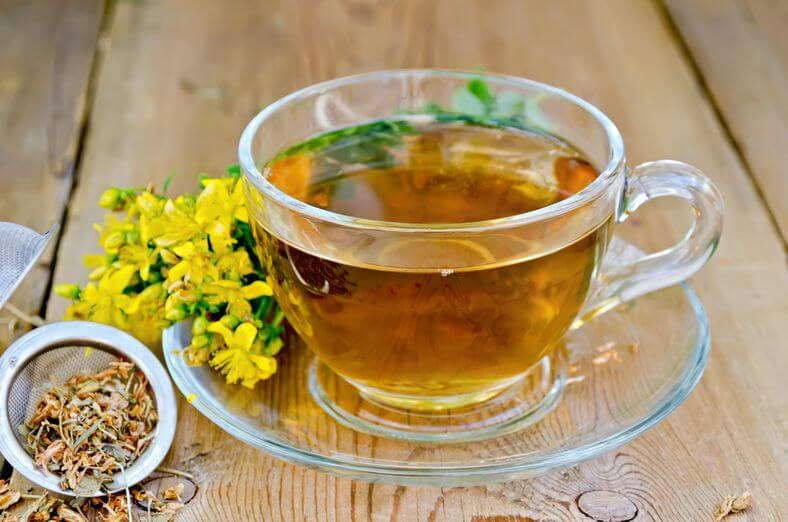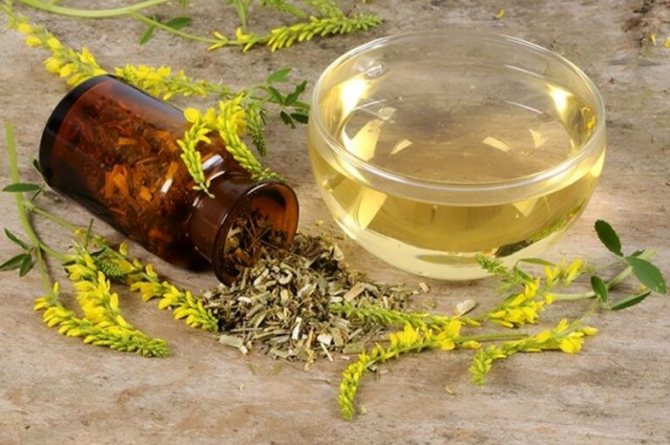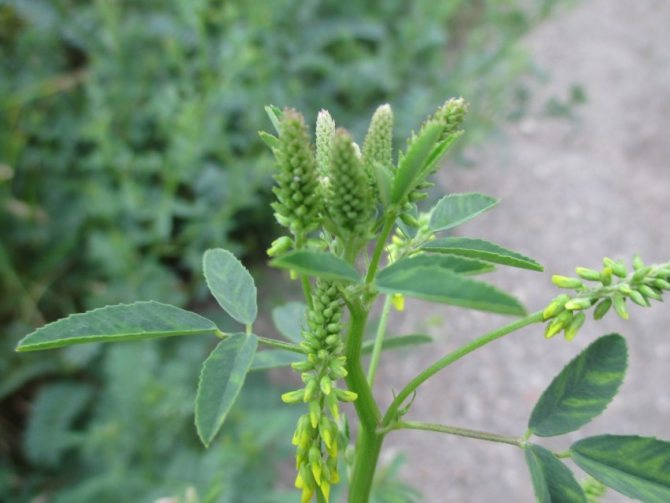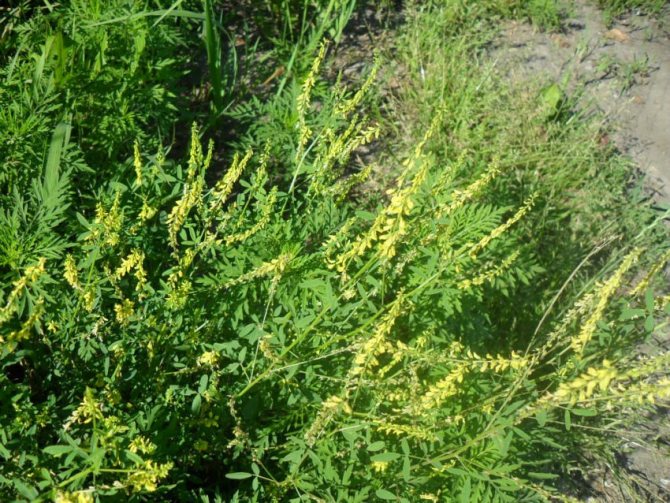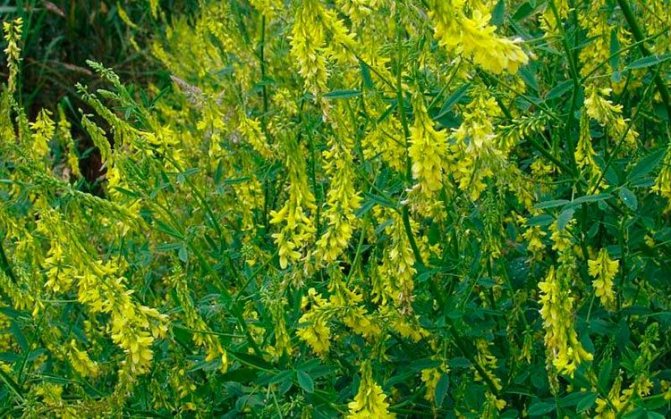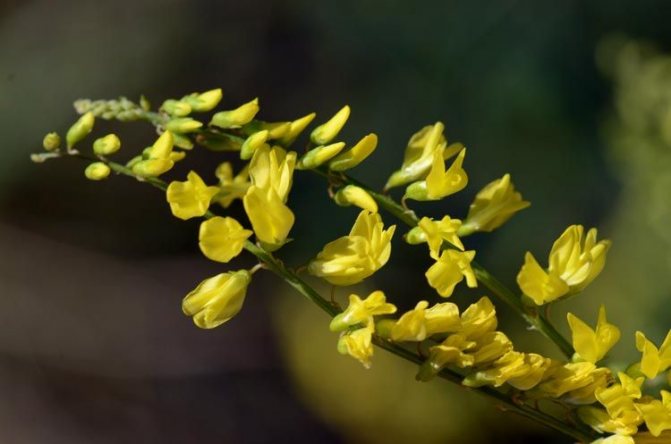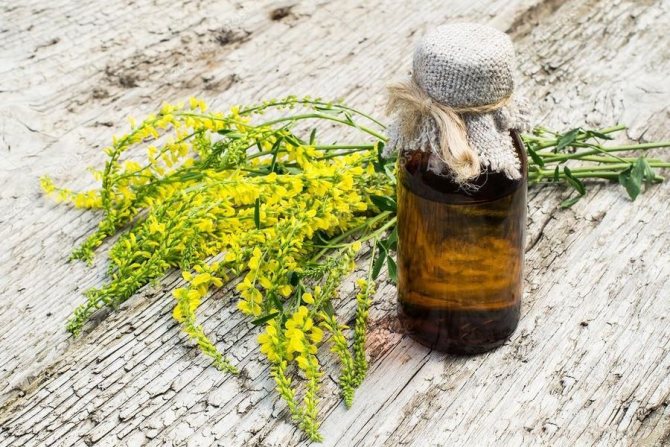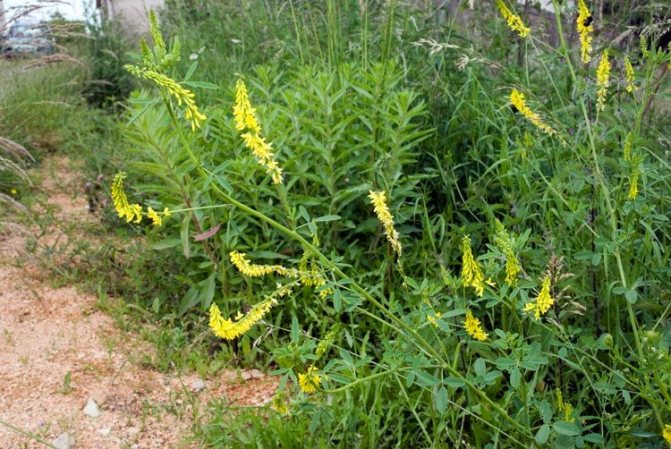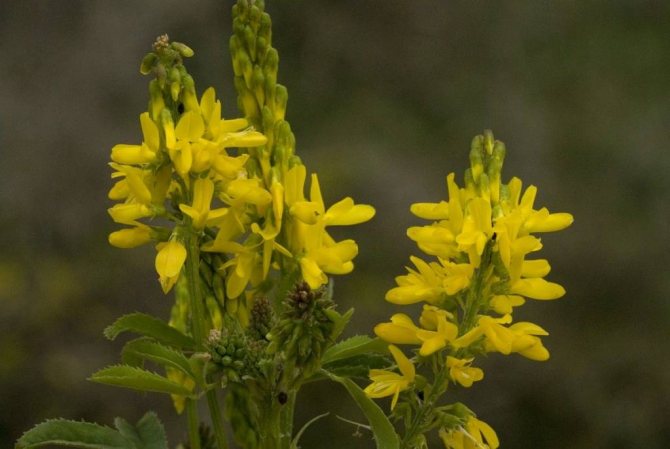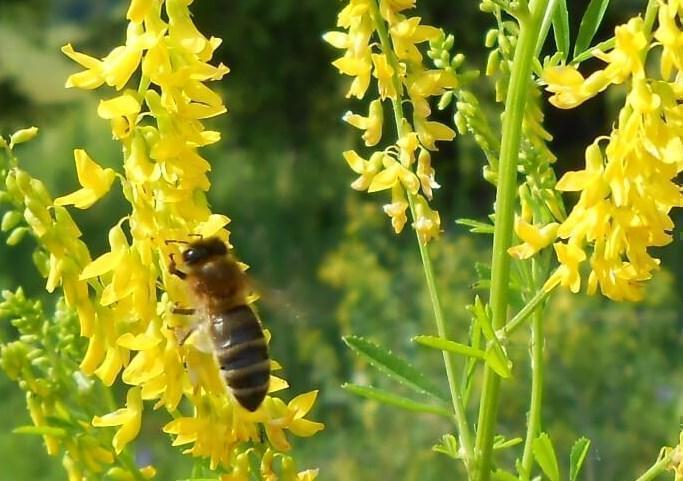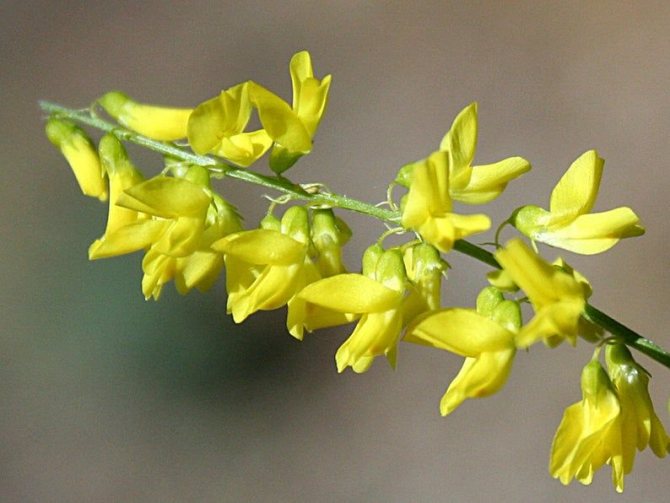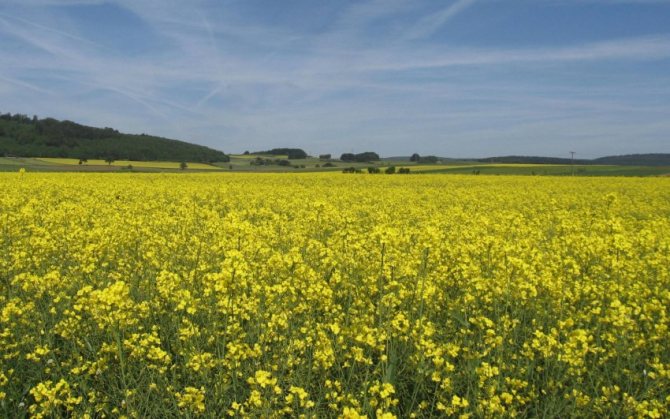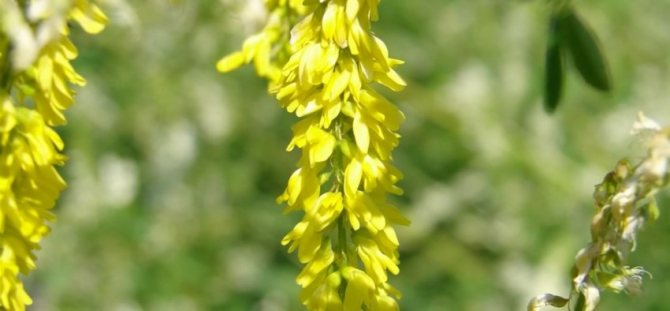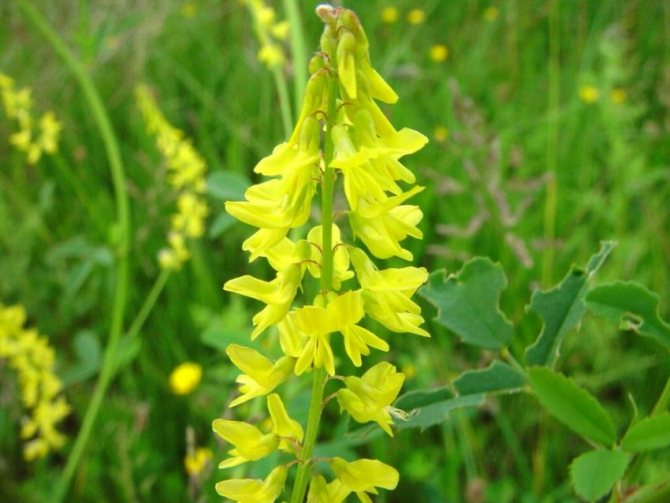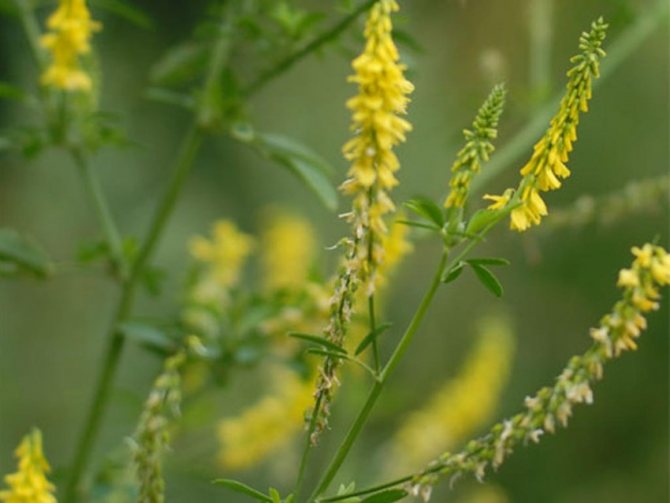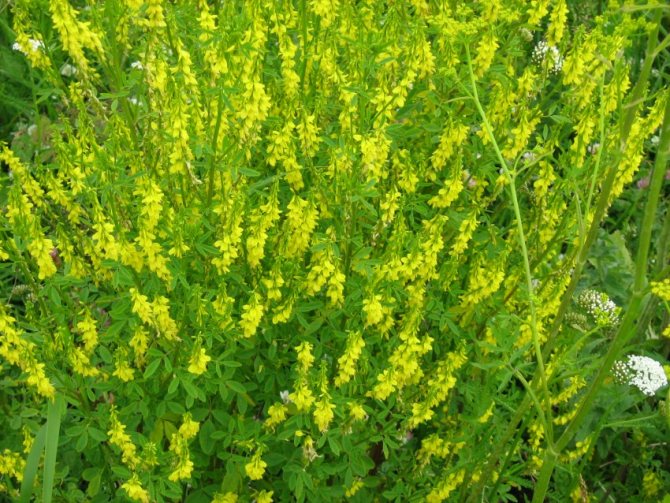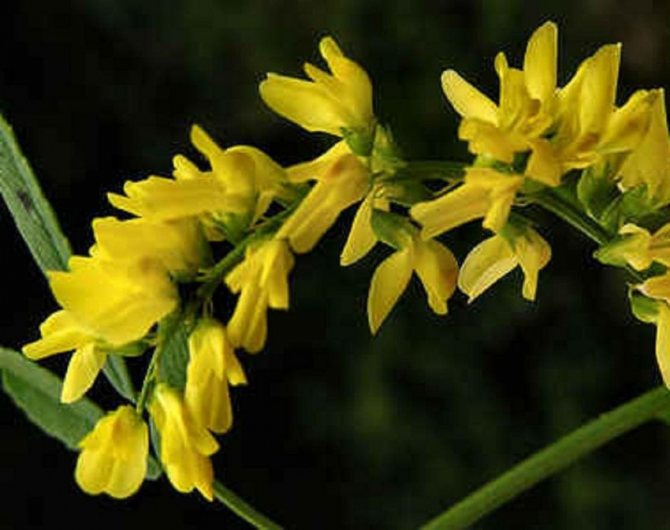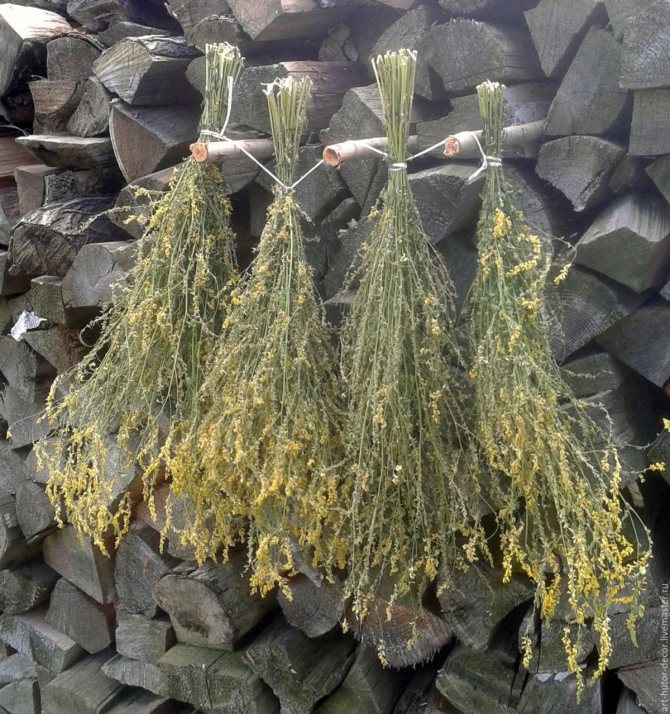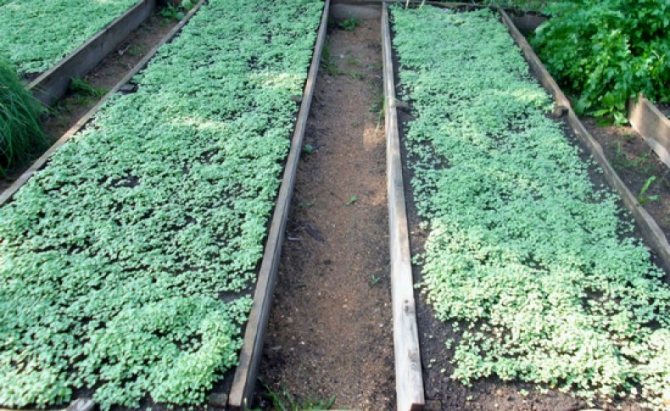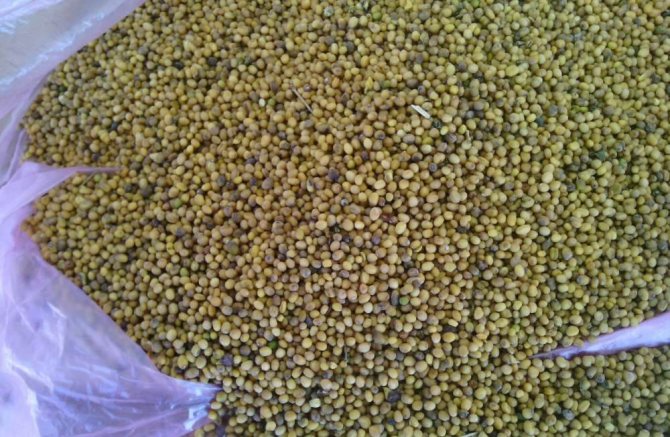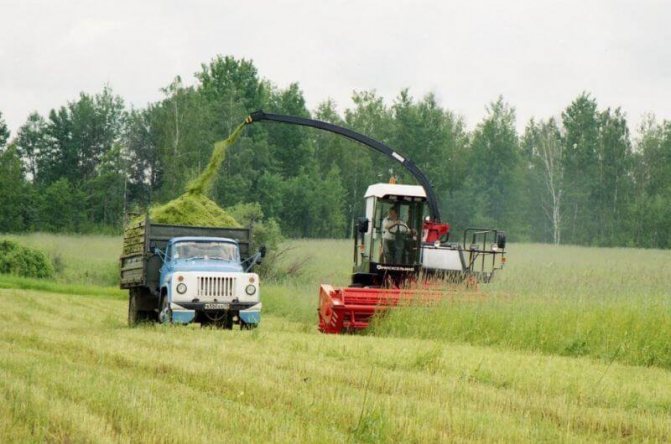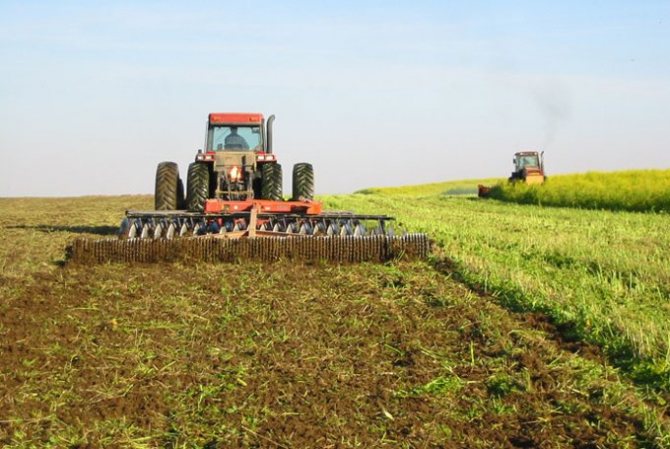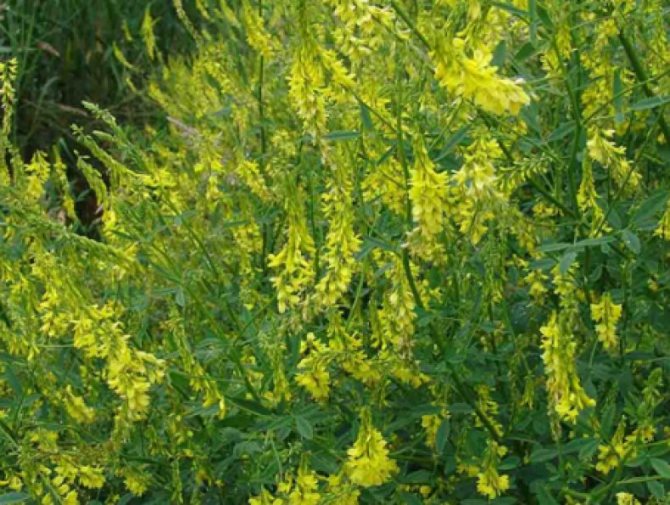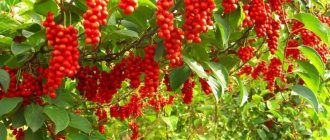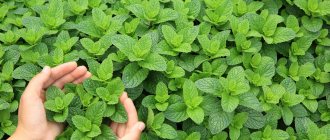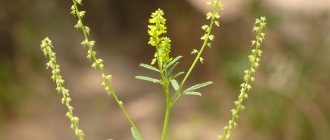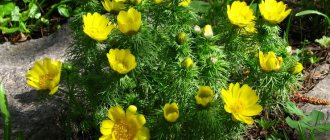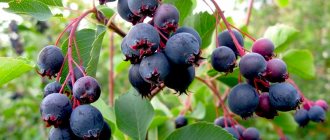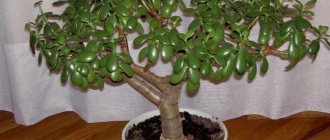Category: Garden Plants
Melilotus (lat.Melilotus) - a genus of herbaceous juveniles of the Legume family. These are valuable forage and green manure plants that have been cultivated for more than 2000 years. Some species are grown as medicinal plants. In everyday life, sweet clover is also called bottom grass, burkun and sweet clover. Representatives of the genus grow in meadows, wastelands and fallow lands in Asia and Europe and have a peculiar aroma.
Description
Melilot yellow - a plant with a two-year life cycle. During the first year, a stem grows without flowers and fruits, which dies off by winter. In spring, flowering and fruiting stems grow from the root collar.
The stem of the plant is straight, branched up to 15o cm in height. Small flowers on elongated peduncles are combined into hanging axillary inflorescences. Belongs to the legume family. The fruit of the sweet clover is an ovoid gray bean with a pointed tip.
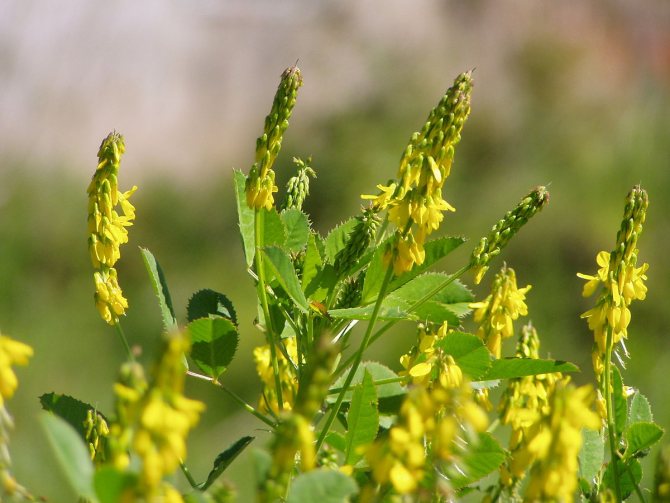
Melilot yellow - legume family
Chemical composition
The content of useful chemical compounds in the plant is large. He has:
- proteins;
- trace elements;
- glycosides;
- tannins and resinous substances;
- organic acids;
- starch;
- choline;
- coumarin and its derivatives;
- flavonoids;
- saponins;
- vitamins B4 and E;
- carotene;
- tocopherol;
- essential oils.
A distinctive feature of sweet clover is a pronounced and persistent aroma of coumarin. It persists even in a dried plant.
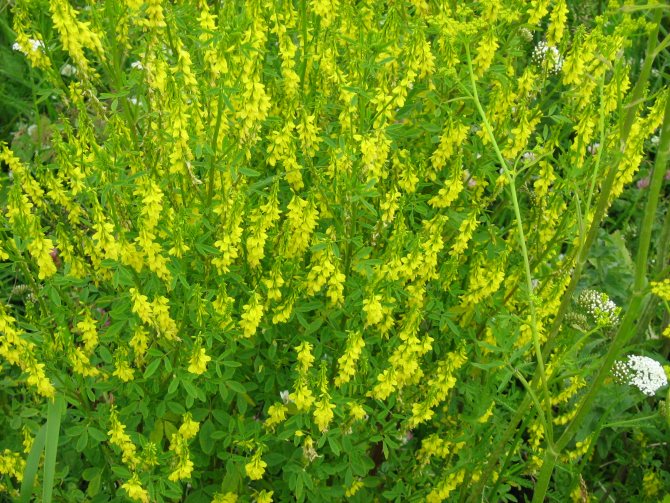

The medicinal plant has a rich composition of useful components
The use of sweet clover in cosmetology
The plant is used in the production of gels, serums and creams for skin prone to rosacea. Such agents have antioxidant and antithrombotic effects. Protect skin cells from the negative effects of environmental factors. In addition, cosmetics based on wild buckwheat have the ability to eliminate puffiness in the eye area.
Before you start using folk remedies, you need to find out what the medicinal sweet clover looks like, the medicinal properties and contraindications of this plant. You cannot start treatment without receiving medical advice.
Pharmacological properties
Preparations with the active substance coumarin are prepared from yellow melilot. It has a depressing effect on the nervous system, has an anticonvulsant and narcotic effect.
In large doses, it acts as a poison.
An indirect anticoagulant, dicumarol, prevents blood clots by reducing blood clotting. Melilot yellow - the basis for the preparation of drugs for the treatment of cardiovascular diseases.


Antithrombotic effect is one of the main therapeutic properties of yellow melilot
Indications for use
The use of medicinal sweet clover for treatment is based on the properties of nutrients in its composition. Medicinal sweet clover helps with:
- colds;
- bronchitis;
- problems of the female reproductive organs;
- menstrual pain;
- asthma;
- diseases of the urinary and cardiovascular systems;
- gout and rheumatism;
- ear diseases;
- prostate adenoma;
- to increase lactation.
Melilot ointments are used for dermatological problems. A plaster with a powder of crushed leaves is applied for purulent tumors, for the treatment of abscesses, boils and acne.
The active ingredients of yellow clover increase the content of leukocytes in the blood. They enhance therapy for radiation sickness. Melilot helps to improve peripheral blood supply.
Fresh young herbs are in demand in cooking and are used in soups and salads. The dried herb is used as a spice.


The medicinal plant yellow sweet clover is actively used in the treatment of diseases of the cardiovascular system
Contraindications for use
The healing properties and contraindications of yellow melilot depend on the content of nutrients in it.
It should be remembered that the main active ingredient, coumarin, if the dosage is exceeded, is poison.
Therefore, it is not recommended to ignore contraindications for taking medications with sweet clover.
- individual intolerance;
- hemorrhagic vasculitis;
- hypotension;
- bleeding, especially internal;
- congenital and chronic kidney disease;
- a history of bradycardia;
- pregnancy;
- children under 18 years of age.
Overdose and individual sensitivity is manifested
- nauseous with vomiting,
- dizziness
- headache
- loss of strength
- tremor of the hands.
It is strictly forbidden to take medicine with sweet clover and drugs that reduce blood clotting. 4 weeks before the planned medical operation, the reception of the sweet clover is stopped.


For bradycardia, sweet clover is not used
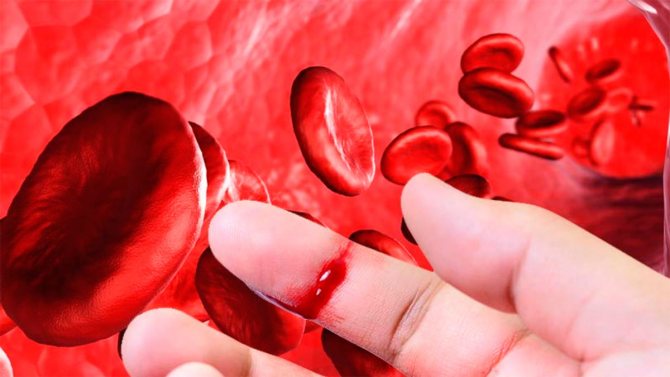

Bleeding is a contraindication for prescribing sweet clover
Sweet clover as a siderat: when to sow
Disembarkation in the spring season is carried out at the end of the first spring month or in the first week of the second spring month, it all depends on the region. For each hundred square meters, from one hundred and fifty to two hundred and fifty grams of planting material is needed, which is placed in water for several hours in advance. Seedlings appear after fourteen days. When the herbaceous flower forms buds, the aerial part is pruned.
Then all gardeners spend everything as they used to:
- the first part places grassy residues in the soil with a shovel or flat cutter.
- the second half does not dig up the soil, thinking primarily about microorganisms that prefer to live in conditions without light, since they die from the direct rays of the sun.
In the first option, you need to wait fourteen days so that the green dressing has time to crumble in the soil and then start sowing seedlings of tomatoes, potatoes, zucchini and berry crops.
In the second option, it is necessary to plant the seedling material on the cut grassy area, the greens are laid between the beds, moistened with bacterial dressing, for example, "Baikal em", straw is placed on top. In order for the green mass to accelerate rot and endow the soil with nutrients, it is timely moistened.
Note! It is required to use mineral fertilizing in the cultivation of herbaceous green manure, due to the fact that they also use phosphorus, nitrogen and potassium. When sowing a plant on already cultivated soil, there may be no loss of nutrients.
Types and varieties of sweet clover
Only yellow sweet clover is used for healing. The rest of the species are ineffective, and the white one is a poisonous plant.
White sweet clover
In agriculture, it is known as grass for pasture and silage preparation. Among beekeepers, it is valued for producing nectar during a long and severe drought. Bees flock to its aroma in any weather.
Gardeners grow cultivated varieties of white sweet clover:
- Volzhanin. Drought, return frost and disease resistant variety. It grows even on salty soils. Erect bush, from 1.5 to 2.5 m in height. Fruits are dark gray with a single oval yellow seed.
- Frost. It is appreciated for its high bushiness.Soft shoots and trifoliate leaves are green in various shades. The inflorescence of white flowers, elongated in the form of a brush, is not dense. The beans are elliptical. Does not suffer from powdery mildew.
- Medet. Early ripening variety. The bush is 1.2 m tall. Shoots are rough. The flowers are large, united in a long narrow inflorescence. The variety easily tolerates frost and drought. Does not suffer from diseases and insect damage. Unpretentious to care.
- Steppe. Early maturing variety, drought tolerant. Harvestable. The stem is long, up to 1.7 m. Leaves with a serrated edge with a waxy bloom on the upper side. Inflorescences in the form of brushes are located in the axils of the leaves.
- Chermasan. Tall, up to 2 m, early ripening variety. Shoots are hard, straight. Inflorescences of whitish flowers are large, 18 cm, medium-sized.
These are the most common varieties of white sweet clover bred.


White sweet clover is dangerous - it is a poisonous plant
Melilot yellow
A common medicinal plant recognized not only in folk but also in traditional medicine. In nature, he likes to grow on the edges of forests, in ravines, along the edges of fields and forests, in meadows. The wild form can also be found in the beds in the form of a weed.
On a herbaceous, coarse at the base of the stem, green-gray leaves of an oblong shape alternately grow. Inflorescences of yellow flowers racemose, 5-7 cm in size.
Gardeners cultivate many varieties of yellow melilot in their plots. The most common are:
- Ishim early. An early ripening and high-yielding variety of medium bushiness, possessing frost, drought and salt tolerance. It is not damaged by insects and diseases.
- Kokshetau. Stable unpretentious plant. Produces a large amount of greenery. The honey from its flowers is of the highest quality.
- Koldybansky. Drought-resistant variety with coarse, low shoots. The bush is small. Excellent honey plant.
- Sarbas. Mid-season high-yielding variety. Resistant to frost and drought. It has a fast growth and, with early mowing, gives another increase in green mass. It is not damaged by diseases and insects that damage seeds.
The dried ground part of the yellow melilot is used against moths. Pottery for milk was steamed with its broth to increase the shelf life.
Medicinal sweet clover differs from poisonous in color and size of flowers. In a useful species, they are large yellow in color.


Only yellow sweet clover has healing properties
disadvantages
Such a wonderful siderat also has several drawbacks. They are completely insignificant.
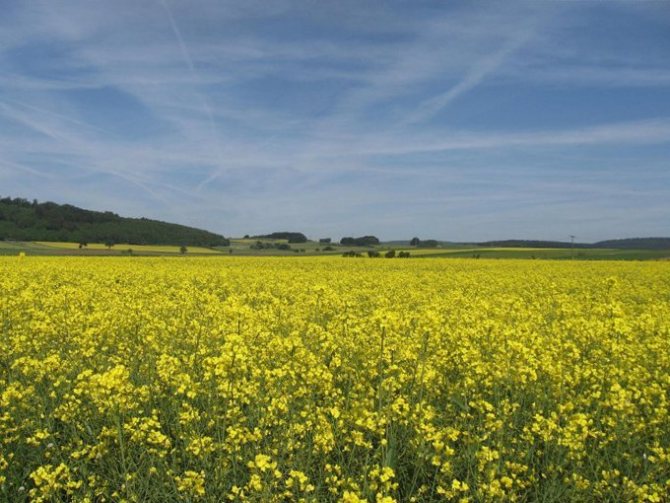

Cleaning time
If you skip it, and let its green mass develop too much, the stems will become too coarse, it will be difficult to remove them, they will decompose for a long time in the ground. In this case, it is better not to embed them in the soil, but to burn them. The ash from them will also be a good fertilizer.
It will also be difficult to extract the rhizomes from the ground due to their too deep occurrence.
Diseases
There are practically no serious diseases in this plant, especially if it is not a cultivated, but a wild sweet clover. It is resistant to many diseases and does not cause any difficulties in this respect.
Melilot is susceptible to powdery mildew. A white bloom appears on damaged plants, they develop worse. But this is not an obstacle to using it as a green manure - powdery mildew is cured, and the plant does not lose its properties.
Occasionally, the roots of the sweet clover also get sick. This can happen if there is long-term stagnation of water during prolonged rains. To avoid this disease, about a month before planting, sweet clover seeds must be treated with fentiuram.
It also has insect pests. These are various types of weevils and bugs. In order to get rid of them, there are many ways in which it is not necessary to use harsh chemical compounds.
Chlorine also has a harmful effect on sweet clover. When watering, you cannot use tap water - it must be defended for several hours.
These are the simple rules for growing sweet clover.
Medications
The range of application of dosage forms from yellow melilot is extensive. They are used externally and internally in the form of tinctures, infusions, lotions and compresses. Melilot grass is stuffed into pads for the treatment of joint diseases. It is included in the fees for the treatment of rheumatism, herpes, sedatives.
The powder of the leaves goes to the melilot patch, it is part of the ointments that are produced by pharmaceutical enterprises.
Melilot is contained in "Cardiophyte" - a pharmaceutical preparation for the treatment of cardiovascular disorders and in a series of preparations for the treatment of leg vessels "Venokorset".
An essential oil is prepared from the flowers. Honey contains so many useful substances that it is a ready-made drug. He has the same contraindications as drugs.
For the preparation of medicinal preparations, dried raw materials are used whenever possible, since many of the properties of a plant are revealed after it is plucked or in dry form:
Useful and medicinal properties of sweet clover. Indications for use
The beneficial properties of sweet clover are used to combat pathologies such as:
- bronchial asthma;
- diseases of the gastrointestinal tract;
- diseases of the urinary tract;
- disorders of the cardiovascular system;
- inflammatory processes of the bronchopulmonary system;
- gynecological diseases;
- otitis;
- gout:
- rheumatism.
Means prepared on the basis of bottom grass, increase concentration, have an anticonvulsant effect, improve memory, blood circulation in the vessels of the brain, stimulate myocardial contractility. In addition, the plant is used in the complex therapy of neurological disorders. Melilot also has a wound-healing, expectorant, analgesic and anti-inflammatory effect.
For men
Bottom grass is used in the complex therapy of prostate adenoma (this disease develops in men after 45 years). Traditional medicine specialists recommend the use of sweet clover for men with chronic prostatitis. Medicines based on wild buckwheat exhibit anti-inflammatory, analgesic and resorption effects.


the plant has a positive effect on maintaining women's beauty and health
For women
Nursing mothers are shown compresses from decoctions and infusions of wild buckwheat with cracked nipples and residual mastitis. The funds have anti-inflammatory and distracting effects. In addition, the plant is used to normalize the menstrual cycle and in the complex treatment of adnexitis. Pharmacy sweet clover is useful for women during menopause. The funds relieve irritability, normalize sleep, and help to cope with sudden mood swings.
Spread
Melilot yellow and its brethren are native to Europe. In Russia, it grows throughout the European part, with the exception of the Far North, in the forest-steppe and steppe places of Siberia, the Far East.
Donnik is a honey plant
A distinctive feature of the sweet clover is the presence of nectar in all weather conditions. It does not evaporate in the heat and does not dilute or wash off by rain. In beekeeping farms, sweet clover is grown to obtain a large amount of high-quality and valuable honey in all respects.
Most of the nectar is in the white sweet clover.
The honey from it has a vanilla aroma and taste. Honey from medicinal melilot has a bitter taste.
The honey of this plant is a source of energy. He also:
- raises tone;
- relieves symptoms of fatigue;
- has a diuretic effect;
- relieves spasms and pain;
- treats inflammation of the airways.
Patients with hypertension and heart problems are recommended to eat 1 tbsp. l. honey 2 times a week to improve the condition.
Healthy people can take honey to maintain immunity and prevent various diseases.
For arthritis and arthrosis, patients are advised to massage with sweet clover honey. It cannot be done with an exacerbation of the disease and a pronounced pain effect.
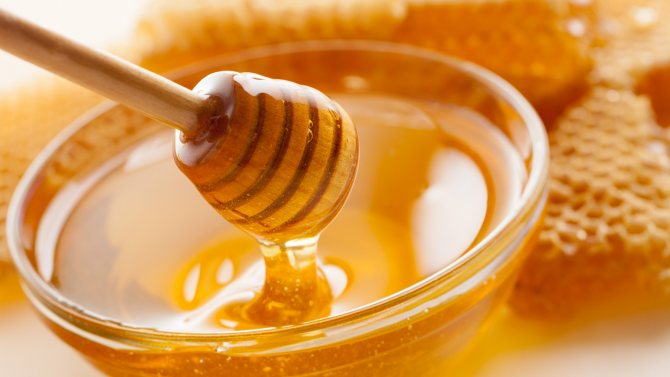

Sweet clover honey has a bright aroma and is good for health.
Melilot yellow like green manure: what is good for?
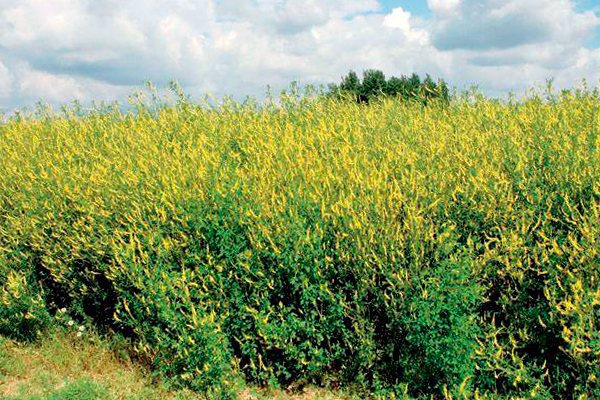

Melilot as a siderat
Legumes can store up to three hundred kilograms of nitrogen per hectare of soil. This is achieved through contact between the root system and the nodule bacteria, which form colonies on the root system.
Ignoring the ability of sweet clover to easily assimilate nitrogen, top dressing contains potassium and phosphorus. Herbaceous is compared to mullein in potency, which has a higher price tag and is more difficult to find in the store to purchase. If summer residents do not have cattle, for example, cows or any other livestock, for example, horses and pigs, the cultivation of vegetables on mullein or other manure will cost a pretty penny. Melilot "yellow" is a green manure with a strong branched root system, which rotting in the soil, endows with the same number of nutrients as a whole feeding with mineral elements in a complex.
However, there are more advantages of using sweet clover as a green manure:
- The use of greenish top dressing endows the earth with organic elements, which stimulates the appearance of humus, namely, herbaceous residues that serve as food for earth microorganisms. Mineral dressing does not have this effect.
- It is possible to use only the root system, allowing it to calmly rot in the soil, while using the greens for other tasks, for example, placing them in compost, making a solution of green dressing, feeding birds or livestock, digging up on ridges with other herbaceous ones.
- The greenery and the root system are enough to feed the entire territory, since the green mass leaves the same number of nutrients in the ground as the root system.
- Maintains the required amount of moisture in the ground.
- It takes useful components from the depth of the soil to the root system of herbaceous ones.
- It grows on all kinds of lands, for example, podzolic or sandy, forest or clayey.
- Possesses phytosanitary abilities, namely drives away nematodes and wireworms.
For the production of biological mass, it will be enough to purchase the planting material of this plant and sow it in the optimal time period on the territory, wait for the buds to appear, cut the lower part and place it in the soil.
Melilot as a siderat is usually used as a herbaceous plant in unkempt areas with a huge amount of weeds, so that the “yellow” melilot stops its growth, and then it was possible to cultivate vegetables on well-groomed ridges.
Medical use
For medicinal purposes, all parts of the plant are used. Medicinal sweet clover contains useful substances in the roots, in the grass, and in flowers. They are also contained in seeds.
Soothing Infusion
The herb infusion has a calming effect. To prepare it, take 2 teaspoons of melilot grass powder and pour 2 cups of warm water. Stir. Insist 2 hours.
Dosing regimen: 70 ml five times a day.
Decoction of roots with flatulence
Heat 15 grams of dry chopped roots for 10 minutes over low heat in 200 ml of water. Cool the broth to room temperature and filter.
Take 1 tbsp. spoon in the morning, afternoon and evening.
Tincture for headache
Fill a jar with a capacity of 0.5 liters for 1/3 with grass. Pour vodka to the top. Insist for 14 days, shaking occasionally. Strain. Store in a dark place under a tightly closed lid.
If pain occurs, apply a few drops to your fingers and rub with an infusion of whiskey.
Infusion for external use
For the treatment of mastitis, articular rheumatism, boils, an infusion of sweet clover herb is made from 30 grams of plant material and 200 ml of water.
Pour the herb over with liquid and leave for 30 minutes without stirring or shaking. Strain the ready-made infusion and make compresses, lotions and medicinal baths with it.
Growing
Melilot propagates only by seeds. It is a biennial plant and fruiting occurs in late summer of the second year.
Ripe seeds have a very hard shell. Therefore, scarification is required before sowing. In nature, seeds crack under the influence of temperature differences and precipitation. Sprouts appear at a temperature of + 4 °.
Landing in open ground
Melilot is not demanding on the composition of the soil, but it grows worst of all on acidic and wetlands. Prefers bright, sunny places.
The landing site is prepared in advance. It is dug up and superphosphate (50 g per 1 sq. M) and potassium salt (20 g per 1 sq. M) are added.
Sowing is done in early spring. Seeds are laid out in furrows in moist soil 45 cm apart. Sprinkle with earth and lightly tamp.
Without stratification, sowing is carried out in winter, so that under the influence of melt water and spring rains, the shell of the seeds becomes softer and the shoots can break through the cracks in it.
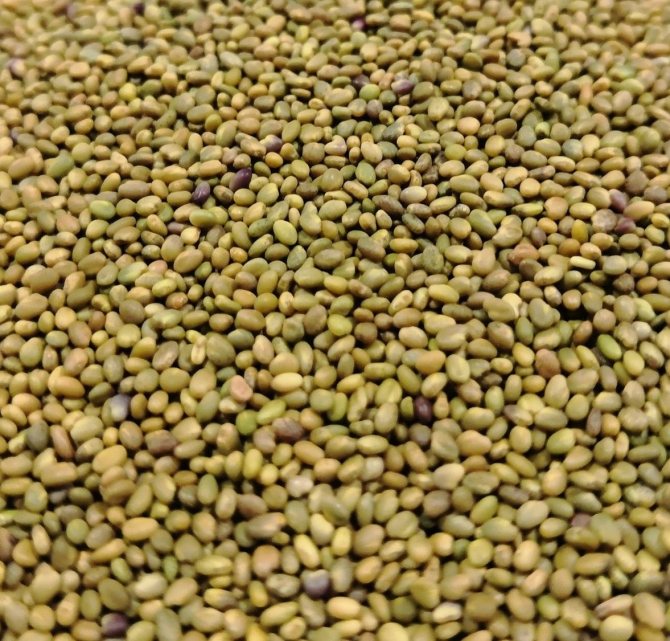

Melilot seeds
Sweet clover care in the garden
Care for the sweet clover is practically not required. After the appearance of two leaves, the planting is thinned out, and the soil is loosened and weeded. With thickened seedlings, when the distance between neighboring plants is less than 30 cm, sweet clover lags behind in development.
First years are intensively building up the root system, therefore, they need fertilizing with mineral fertilizers.
In the spring of the second year, with the onset of snow melting, you need to monitor the root collar and prevent it from flooding.
It is often impossible to water the sweet clover. For him, excess moisture is more terrible than its lack. Easily and without loss tolerates prolonged drought.
Action in soil
Sweet clover gives a lot of green mass, but its root system is of great value as a green manure. It is well branched, penetrates deep into the ground, loosens it. Due to its qualities, sweet clover easily extracts nitrogen from the air - only alfalfa can be a competitor to it in this respect, and even then not in all cases. Such a root system strengthens the soil, prevents it from being washed out, and supplies it with humus.
It is better than other plants capable of dissolving phosphates in the earth.
Melilot, especially annual, grows remarkably on highly saline soil. For one or two seasons, he “rasalizes” it, significantly increases fertility.
In addition, it supplies the earth well with organic matter. Its roots quickly rot, enrich the soil with organic matter. Has other important qualities as well.
The above-ground mass develops very quickly, it forms huge thickets. But even if you do not wait for its growth, and mow it in advance, the root system will create the necessary nutrition for the soil.
Melilot has very powerful roots, so when using it as a green manure, you should not allow them to penetrate the ground deeper than 50 cm.Otherwise, it will be very difficult to plow the ground, and the rhizomes will decompose for a long time.
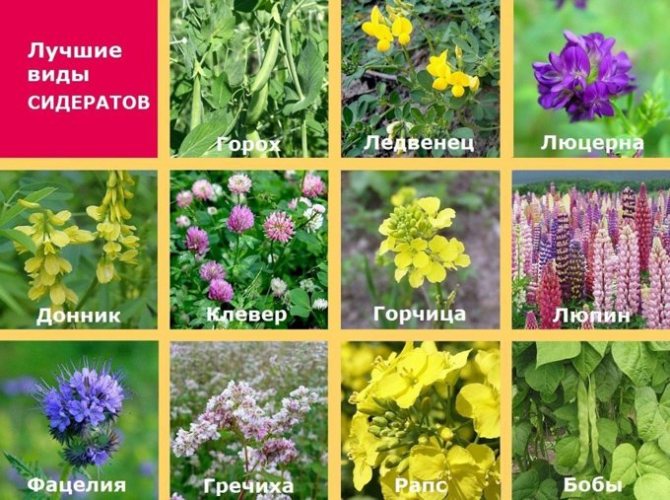

Retains moisture
The plant itself is undemanding to soils, but does not really like acidic and neutral soils. It grows best on loam and is often used on uncultivated or impoverished, neglected land to make it more fertile. As a "pioneer", sweet clover is one of the best green manure plants. To do this, they do not mow it in the first year, they leave it on the ground. It tolerates frost well, keeps snow. Thanks to this, the soil is well moistened in the spring. Melilot promotes good gas exchange in the soil, after which its structure is significantly improved.
Deters pests
Melilot has excellent phytosanitary properties.It disinfects the soil, helps with root rot. Nematodes are afraid of its smell; it has a detrimental effect on wireworms and other pests. May beetles do not lay eggs in the soil where sweet clover grew. At the same time, the beneficial microflora of the soil improves, it becomes more fertile.
It was noticed that in the first year after the yellow sweet clover grew on the field, mice avoid settling on it.
Fights weeds
It was noticed that in the place where the sweet clover grows, in the first year after it, weeds are practically not found.
Predecessor
On the soils where melilot grew, most garden crops subsequently grow well. This does not apply to any legumes, as sweet clover itself is a legume. It is especially good before planting nightshades, melons, cucumbers, zucchini. All garden crops that require a lot of nitrogen grow well on this soil. Since it is a leguminous plant, it accumulates nitrogen in the soil, and this improves the condition of garden crops, which will then grow in this place. The sweet clover itself does not matter what was grown before it. He will grow well after any plant, even after legumes - his root system will help him get everything he needs for himself.
Contraindications
It is not recommended to plant it in front of flowers - asters, calendula, chamomiles.
Diseases and pests
Medicinal sweet clover is attacked by insects and plant diseases. With improper care, most often, with increased watering, or a long rainy period, the plant becomes ill with powdery mildew, bacteriosis of the roots and other fungal infections. Treatment with fungicides in such cases should be carried out immediately. Apply Maxim, Fundazol and other drugs with a similar effect.
Another dangerous disease - the yellow mosaic is not amenable to treatment and destroys all plantings of sweet clover.
Of the insects, the enemies are the red-bug, weevil, kraevik, palomen, and shield bugs. To combat them, you will need to spray the plant with insecticidal preparations. This should not be done immediately before the collection of medicinal raw materials.
To prevent insect damage, the soil is treated with insecticides, the area with the melilot is regularly weeded.
There are varieties that are resistant to a number of diseases and weevil damage.
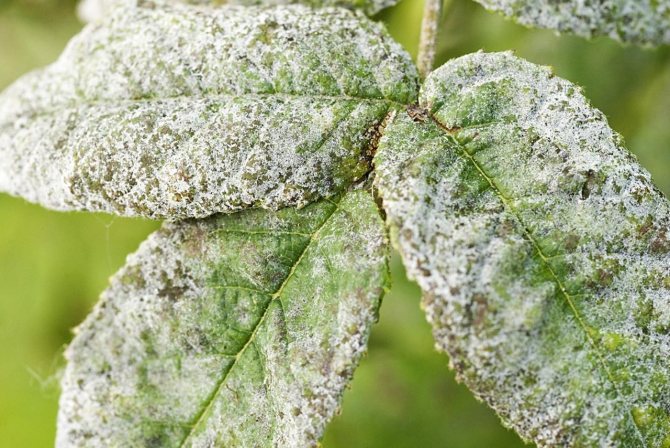

Powdery mildew is the enemy of plants
Sweet clover honey
Since this plant has many medicinal properties, making honey from it is just a godsend for the prevention of diseases and maintaining the body in good shape. It has analgesic, anti-inflammatory and antispasmodic effects.
Honey will restore strength after serious illness and prevent all sorts of relapses. Relieve regular migraines and dizziness. And a pleasant aroma and taste will bring pleasure when using it.
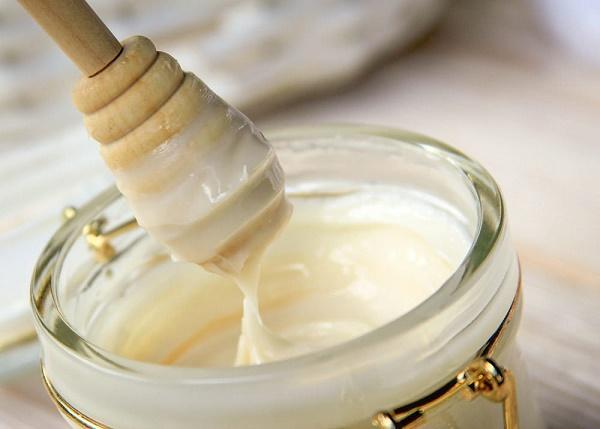

Collection and storage of sweet clover
Sweet clover is harvested for medicinal use during the flowering period, which begins in July. This is done in dry weather so that the plant does not contain a large amount of moisture and does not begin to rot and rot. Lateral shoots are cut with pruning shears.
The chopped greens obtained during the collection and drying process are stored in fabric bags, paper bags or boxes, in glass or ceramic jars with a lid.
Root harvesting takes place in early spring or autumn. They are washed, damaged areas removed and dried in dryers.
The shelf life of dry raw materials is 2 years.


For proper storage, the sweet clover must first be dried and then chopped

